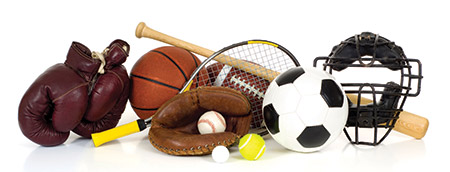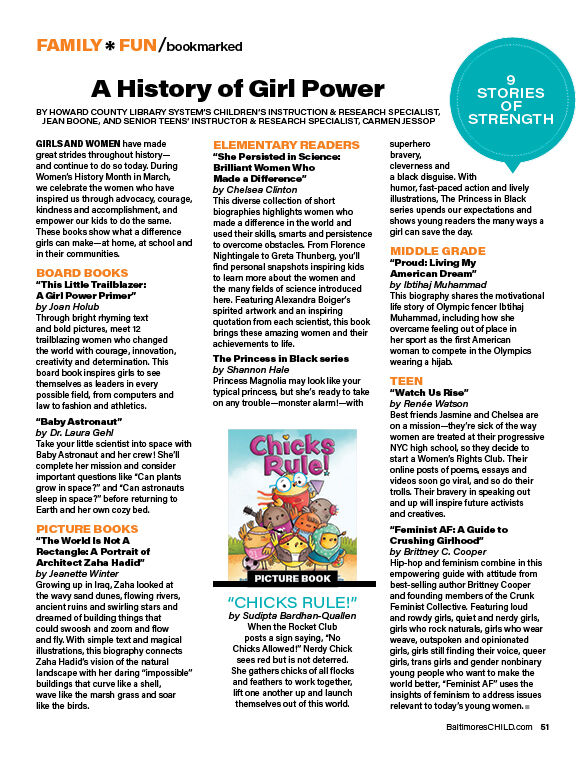 When I was a kid, exercise consisted of running around the neighborhood and playing backyard games with friends. The most organized sport I participated in was summer swim team where, quite frankly, I was mostly in it for the permission to eat strawberry Jell-O crystals straight from the box on a Saturday morning!
When I was a kid, exercise consisted of running around the neighborhood and playing backyard games with friends. The most organized sport I participated in was summer swim team where, quite frankly, I was mostly in it for the permission to eat strawberry Jell-O crystals straight from the box on a Saturday morning!
Today’s kids, by contrast, often navigate a complex year-round calendar of sports and recreational pursuits that require a major investment of time and money. Team dues, traveling and snacks aside, how can parents save on their children’s sports activities?
Two words: used gear.
Derek Steele, manager of Play it Again Sports in Nottingham, has experience as a dad and a coach, but what makes him a real authority here is his 19-year history with the go-to spot for buying, selling and trading sporting goods. “The reality is that youth sports have gotten expensive in the last ten years or so. Kids who show any aptitude for a sport are quickly pushed to clubs. Gear has skyrocketed in price,” says Steele.
Secondhand is by no means second rate. Lots of the gear is in excellent shape. Kids quit. They get injured. They have growth spurts. Steele notes that parents can bring in items to trade and essentially “write their own coupon” towards replacement gear. Used gear is priced at roughly half of original cost or less, depending on its condition.
To get the best selection, Steele suggests you scout consignment a month or two ahead of the season’s start. For example, shop for winter sports items in October; lacrosse and baseball/softball in February; golf equipment in March; and football and soccer in June. “The most in-demand is gear for kids aged 5-10,” says Steele. “That’s when most kids start sports and have to buy gear for the first time, so we sell tons of it.”
A budget-minded mom, I’m guilty of the “they’ll grow into it” mentality; but with sports equipment, fit is important. And buying ahead can backfire. “It seems every week I get a parent with brand-new gear they bought in advance and the kid can’t fit into,” Steele says.
Another caveat is changing regulations on the equipment, which can render some items obsolete. Luckily for parents, Play it Again staff make a point of staying up-to-date on the regulations of all the recreation councils in Baltimore and the surrounding areas. The stores also service and repair equipment, which can help extend the life of your investment.
The lifespan of used gear varies, according to Steele. “Protective pads such as hockey/lacrosse gloves, arm pads and shoulder pads usually have a 5-10 year lifespan. Baseball gloves can last 30 years or more if conditioned and taken care of properly. We try to buy most equipment within 10 years of manufacture.”
Again, those changing regulations can make things tricky. “Baseball and softball are well known for this,” says Steele, “The bats need to have certain stamps to be legal for league play and the stamps change every few years. Lacrosse sticks were subject to new regulations for the width of the head and the configuration of the pocket a few years ago. Football helmets should be recertified every two years. They have a maximum lifespan of 10 years, at which time they are considered to be unsafe.” A good new helmet is one item Steele says may be worth a splurge.
Hockey, lacrosse and snow sports tend to require the most expensive gear. Often, too, it’s the whole family heading out to the slopes, adding up to an extra steep tab. That’s why renting can be a good option. But if your family will be skiing and snowboarding regularly next year, plan to visit the Baltimore Ski Swap, a consignment sale held in November at the Towson Armory. Kris Spaulding of Towson has found success there in outfitting her family of four.
“There’s no point in buying the kids brand-new items every year. I haven’t had any problem finding sizes of skis, poles and boots for the kids, my husband and myself,” says Spaulding. Shoppers can consign outgrown gear and find suitable replacements; buy past rentals from ski resorts; and find a wide assortment of jackets and snow pants, boot bags and accessories. Spaulding notes that experts on staff at the “swap” help with fit and selection. Savvy shoppers may choose to pay a nominal fee to get early admission to the sale.
If you know exactly what you need, a final thrifty source worth mentioning is social media. Neighborhood news groups, local moms clubs, school/class pages and community virtual “yard sales” often offer equipment that people’s kids have outgrown. Post a request to find a specific item, and you may get lucky. In my own neighborhood Facebook group, for example, tiny cleats are often up for grabs, and just last week someone advertised full lacrosse equipment “suitable for a 10-year-old boy”—for free!
Be practical and informed, and you can save like a champ.









